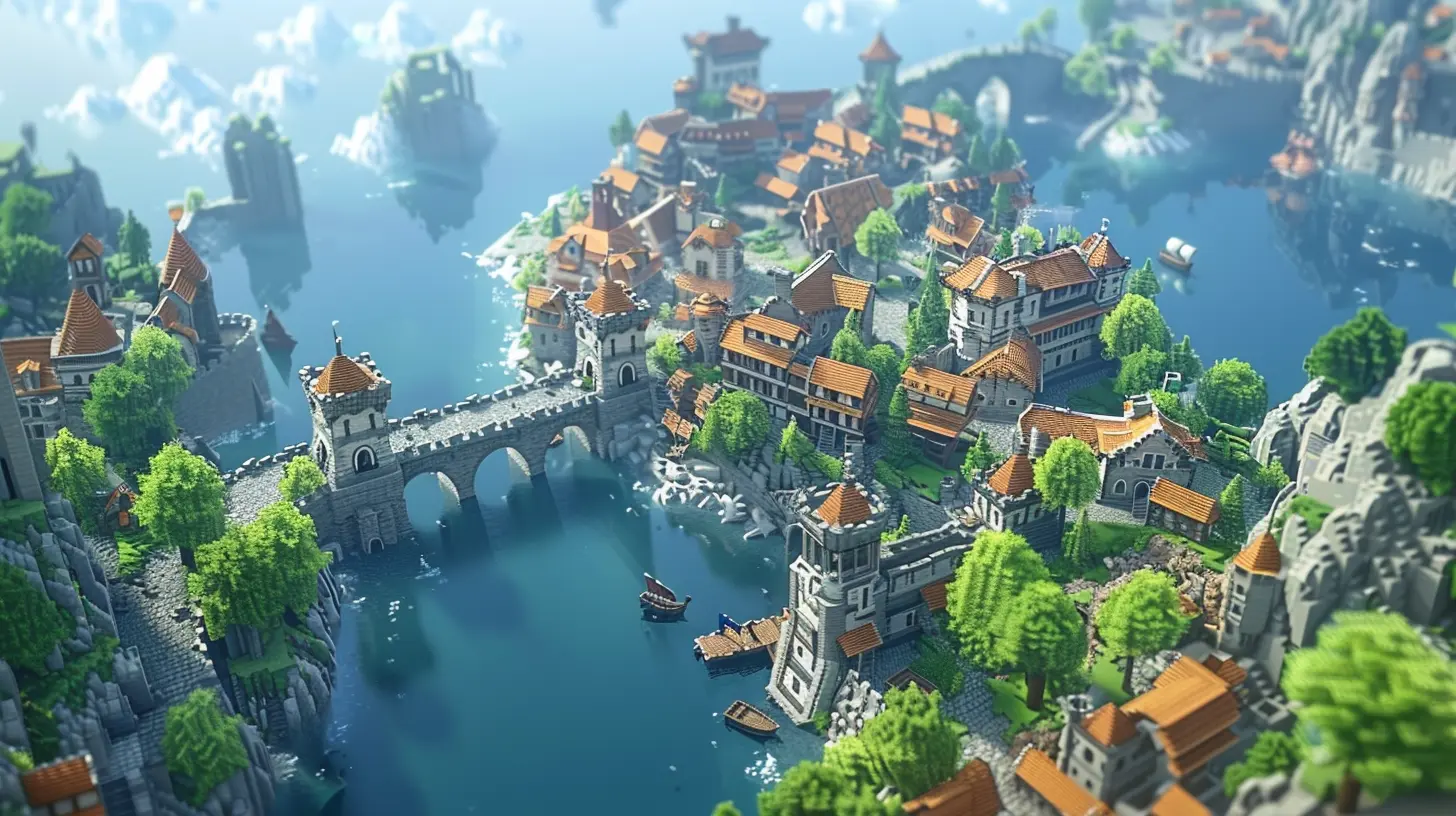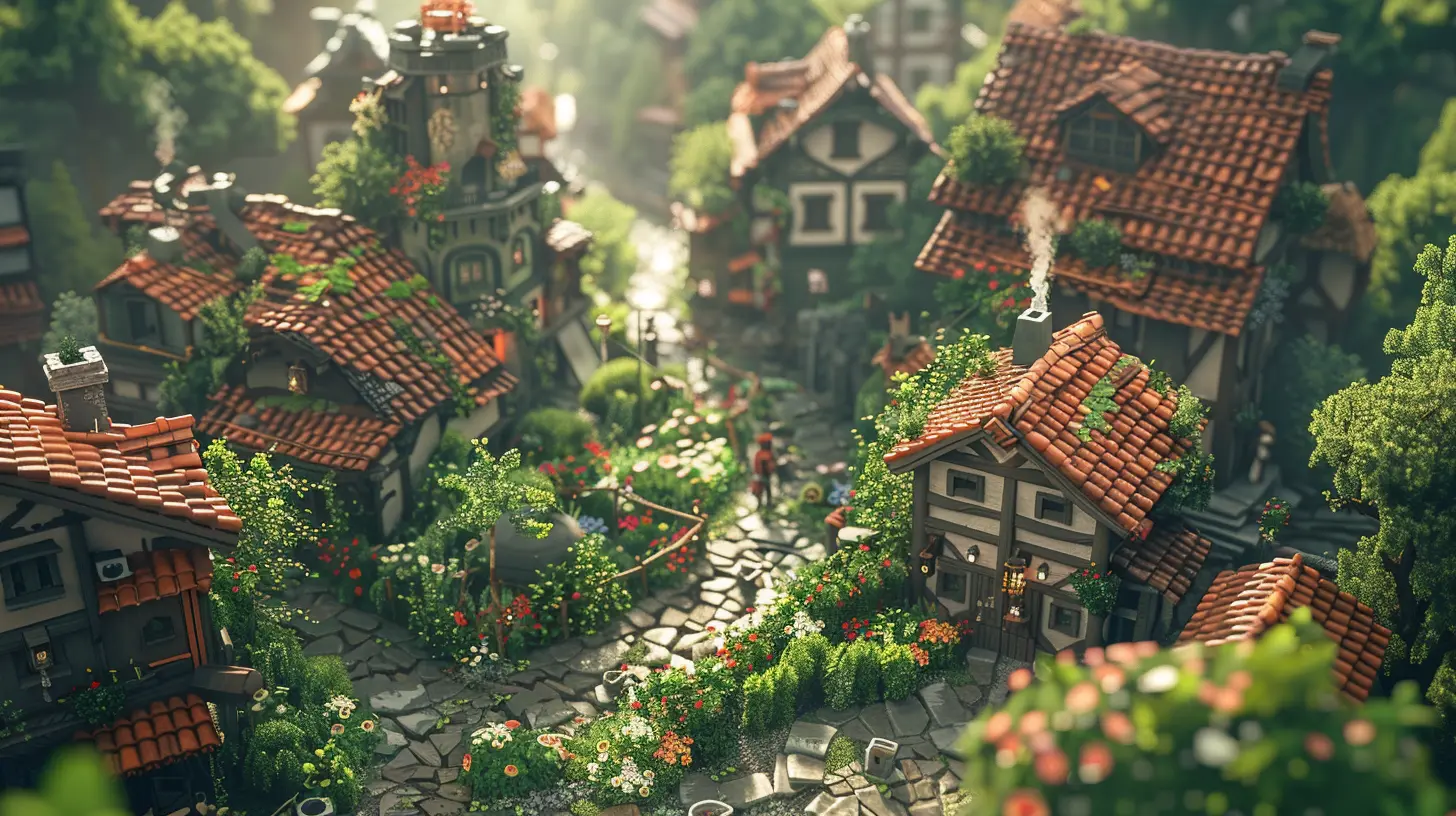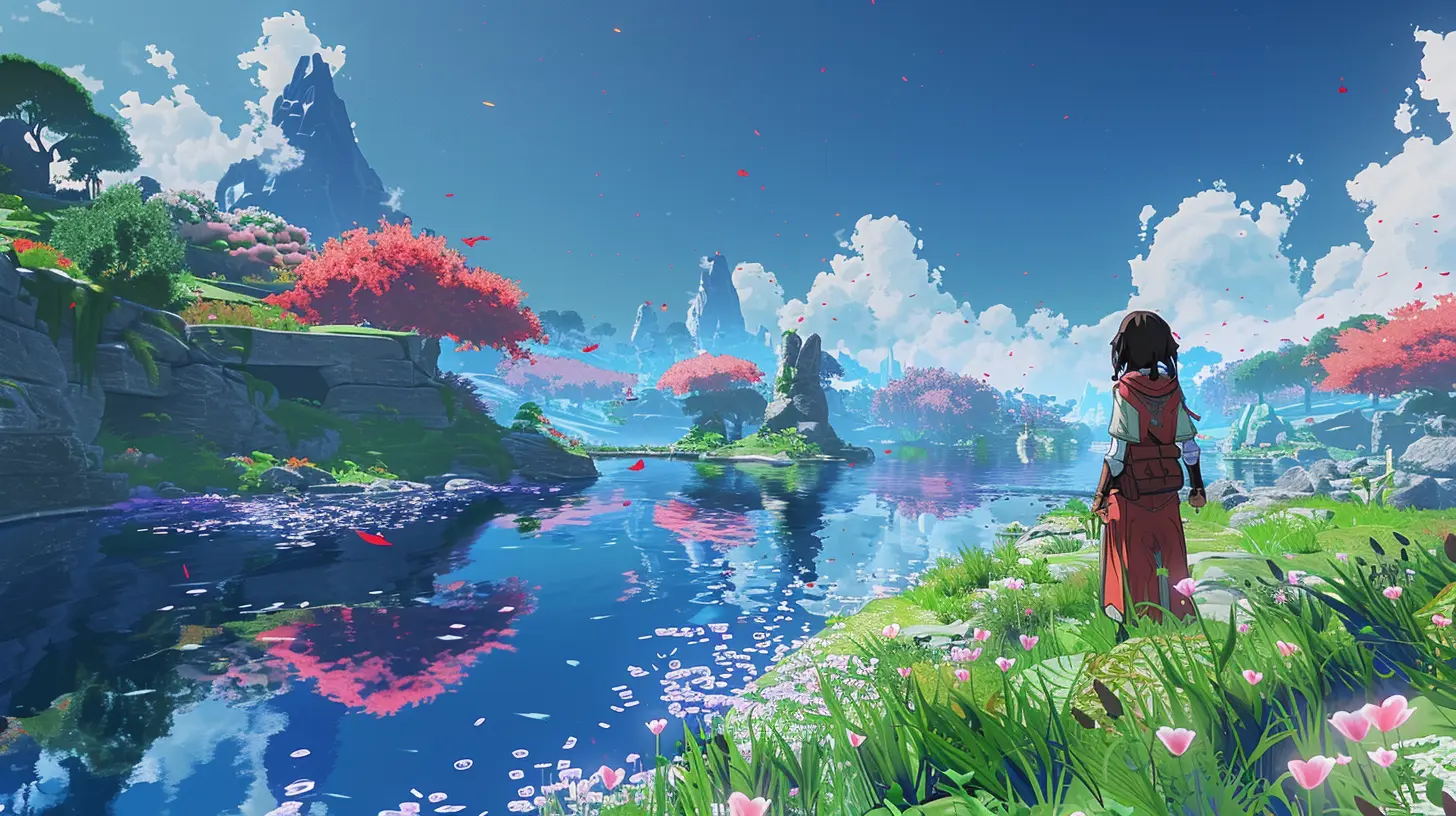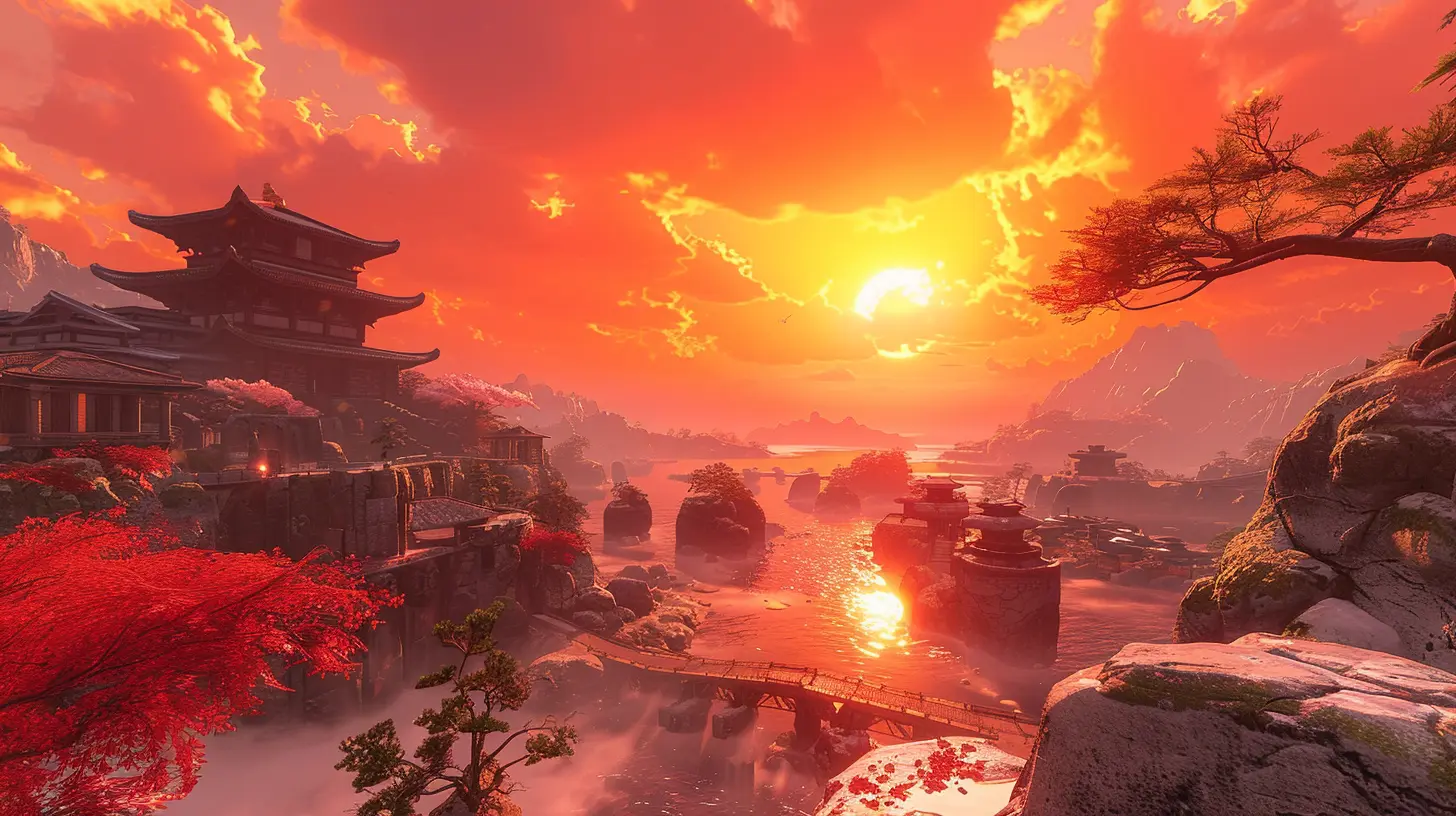The Perfect Balance: How to Build Worlds That Complement Gameplay Mechanics
29 March 2025
Let’s be honest here—video games at their core are about playing. You can slap on stunning visuals, craft a tear-jerking narrative, or jam-pack it with bombastic action, but if the gameplay ain't fun, you’ve lost your players before they even get to that shiny endgame. That’s where world-building comes in. A well-designed world isn’t just a pretty backdrop; it’s the secret sauce that makes gameplay engaging, immersive, and downright unforgettable. So, let’s talk about how to build worlds that actually enhance gameplay mechanics rather than distract from them.

Why World-Building and Gameplay Need to Be BFFs
Think of a video game like a sandwich. Gameplay mechanics are the meat—without it, you’re just chewing on bread. World-building is the seasoning; it’s what makes every bite worth savoring. Separately, they’re fine. Together? Culinary bliss.Now imagine serving tender, smoky barbecue brisket on stale, bland bread. Gross, right? That’s exactly what happens when the world and gameplay don’t align. The world should act like a stage where your gameplay flourishes, not a mismatch that leaves players scratching their heads or, worse, bored.
When done well, the world reinforces the mechanics. Imagine “Dark Souls” without its haunting, oppressive world that mirrors its punishing difficulty. It wouldn’t work. Similarly, picture “Animal Crossing” with a post-apocalyptic wasteland aesthetic—hard to relax and fish when mutants might eat your face.
So, how do you blend world-building and gameplay mechanics to create magic? Let’s dive in.
Step 1: Define the Core Gameplay Mechanics First
Here’s the deal: gameplay mechanics are the backbone of your game. They decide how players interact with your world. If you start world-building before nailing down the mechanics, you’re putting the cart before the horse. That’s like painting a house before you’ve laid the bricks—what are you even painting?For example, if your game’s mechanics focus on stealth, your world should emphasize spaces that encourage sneaking. Tight corridors, shadowy alleys, and tall grass for cover—these elements will make sneaking feel natural. On the flip side, designing wide-open, barren landscapes would feel off. It’s like putting a fish in the desert and expecting it to swim. Ridiculous, right?
Questions to Ask Yourself
- What do players do in this game? Are they solving puzzles, fighting enemies, or exploring?- What emotions do I want players to feel? Tension? Freedom? Excitement?
- How does the environment affect the player's abilities?
When you start with mechanics, you ensure the world exists to serve the gameplay, not the other way around.
Step 2: Find the Theme That Resonates
Alright, mechanics are done. Now, it’s time to give your world some personality. This is where theme comes in—the vibe, the tone, the big picture that ties everything together.Think about "Hollow Knight"—a beautifully tragic Metroidvania set in a decaying insect kingdom. Its theme of decay and perseverance is woven into every corner of the world, from the crumbling architecture to the melancholic NPCs. And you know what? That theme complements the exploratory, stamina-draining mechanics perfectly. It’s like peanut butter and jelly—they might seem like opposites, but together? Chef’s kiss.
Tips for Nailing the Theme
1. Let the Mechanics Guide the Theme: If your game is fast-paced and chaotic, your world should reflect that with vibrant colors, unpredictable environments, and maybe even quirky NPCs. Think “Borderlands”—its over-the-top shooting mechanics are reinforced by its zany, post-apocalyptic world.2. Create Contrast Where It Matters: Sometimes, a stark contrast can heighten the theme. A cozy home base in a war-torn land gives players a breather while emphasizing the stakes when they step back into the battlefield.

Step 3: Build Environments That Encourage Interaction
Quick question—what’s more memorable: walking through a beautifully designed but static landscape, or being in a world where everything reacts to you? Yeah, it’s a no-brainer. The secret to blending world-building and gameplay mechanics lies in player interaction. Your world shouldn’t just sit there looking pretty; it needs to invite players to poke, prod, and explore.Take “The Legend of Zelda: Breath of the Wild” as an example. Its world feels alive because it’s interactive. Players aren’t just running from point A to B; they’re climbing mountains, burning grass, and shield-surfing down slopes. The mechanics and world-building work in sync, creating an organic experience that feels satisfying to play.
How to Create Interactive Worlds
- Physical Interactions: Make sure the environment "talks back" to what players do. Shoot a barrel? Boom, it explodes. Step into a puddle? Splash, your character reacts.- Player Agency: Let players alter the world. Whether it’s building a fortress, solving environmental puzzles, or causing chaos, give them a sense of control.
- Reward Exploration: Hide secrets, lore, or even gameplay boosts in tucked-away corners. This rewards the player for engaging with the world rather than just skimming over it.
Step 4: Inject Meaningful Context
Want to know the difference between a world that’s immersive and one that’s just wallpaper? Context. Without it, your world is just a collection of pretty assets with no soul. Remember, players want to feel like what they’re doing matters—not just for the story, but for the gameplay, too.For instance, in “Portal”, the sterile, clinical test chambers aren’t just there to look futuristic. They reinforce both the narrative (you’re a guinea pig in GLaDOS’s twisted experiments) and the gameplay (puzzle-solving needs clean, precise layouts). Every detail has meaning, and the context ties everything together.
Tips for Contextual Storytelling
1. Environmental Storytelling: Think blood-stained walls, scattered journals, or statues of forgotten gods. These visual cues immerse players in your world without overwhelming them with exposition.2. World Logic: Make sure your world makes sense. If your game’s set in a frozen wasteland, why would there be palm trees? Keep it consistent.
3. NPC Integration: Populate your world with characters that react to the player's actions. A terrified villager or a grateful shopkeeper makes the world feel alive.
Step 5: Iterate, Iterate, Iterate
Finally, world-building and mechanics aren’t something you get right on the first try. It’s a balancing act that requires constant tweaking. Playtests can reveal a lot—if players are struggling to understand a mechanic or getting lost in the world, that’s a red flag.Remember, building worlds that align with gameplay is like tuning a guitar. The first few strums might sound off-key, but with a few adjustments, you’ll hit that perfect note.
Real-Life Examples of Perfect Balance
Let’s look at some games that totally nailed this:1. “Minecraft”: Its sandbox mechanics are perfectly mirrored by its blocky, modular world, encouraging creativity and exploration.
2. “Red Dead Redemption 2”: The world’s painstaking detail immerses players in its narrative-driven mechanics, from realistic horse care to dynamic weather systems.
3. “Celeste”: The mountain you climb is a brilliant metaphor for overcoming personal struggles, seamlessly blending challenging platforming mechanics with thematic world-building.
Conclusion: Crafting Magic That Players Will Remember
At the end of the day, building worlds that complement gameplay mechanics isn’t rocket science—it’s storytelling with purpose. Every mountain, forest, or crumbling ruin you design should enhance how your game plays. When the world and mechanics work in harmony, you create a game that sticks with players long after they’ve put the controller down.So, whether your game is a heartwarming farming sim or a heart-pounding battle royale, remember this: the world is more than just a backdrop. It’s a stage, a playground, and sometimes even part of the story. Build it with care, and it’ll elevate your gameplay to legendary status.
all images in this post were generated using AI tools
Category:
World BuildingAuthor:

Greyson McVeigh
Discussion
rate this article
5 comments
Zia Good
This article insightfully highlights the intricate relationship between world-building and gameplay mechanics. By emphasizing coherence and immersion, it illustrates how well-crafted environments enhance player experience, ultimately fostering deeper engagement and satisfaction.
May 11, 2025 at 5:01 PM

Greyson McVeigh
Thank you for your thoughtful feedback! I'm glad to hear that the article resonated with you and highlighted the crucial connection between world-building and gameplay mechanics.
Rina Wilkerson
Happy world-building! Let creativity and gameplay dance together!
April 23, 2025 at 2:44 AM

Greyson McVeigh
Thank you! I appreciate your enthusiasm for the synergy between creativity and gameplay!
Uriah Wolfe
Great insights on world-building! Striking the right balance between narrative and gameplay is crucial. I’d love to see more examples of games that excel in this area. Keep it up!
April 9, 2025 at 3:28 AM

Greyson McVeigh
Thank you! I appreciate your feedback and will definitely consider adding more examples in future discussions. Stay tuned!
Caden Montgomery
Where dreams and play entwine.
April 4, 2025 at 4:57 AM

Greyson McVeigh
Thank you! Striking that balance is key to creating immersive experiences that engage players and fuel their imagination.
Fletcher McVeigh
This article beautifully highlights the intricate relationship between world-building and gameplay mechanics. The insights on creating environments that enhance player experience are invaluable. It's a reminder that a well-crafted world can elevate gameplay from ordinary to extraordinary. Thank you for sharing these thoughtful perspectives!
March 30, 2025 at 3:00 PM

Greyson McVeigh
Thank you for your kind words! I'm glad you found the insights valuable and appreciate your perspective on the importance of world-building in enhancing gameplay.
MORE POSTS

The Challenge of Balancing Realism and Fun in Video Games

The Rise of Battle Passes: Are They a Better Alternative to Traditional Microtransactions?

Why Retro Games Are Still So Hard to Beat

How Social Games Are Shaping the Future of Online Relationships

The Role of Sound Design in Elevating Immersion in Games